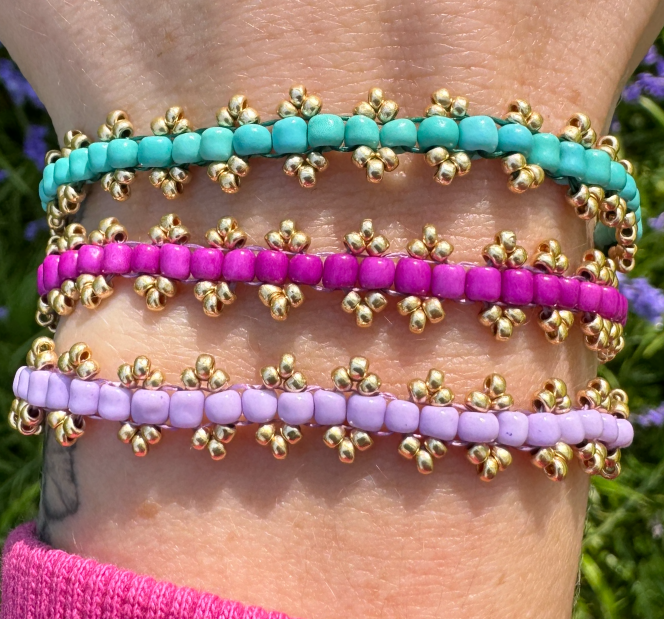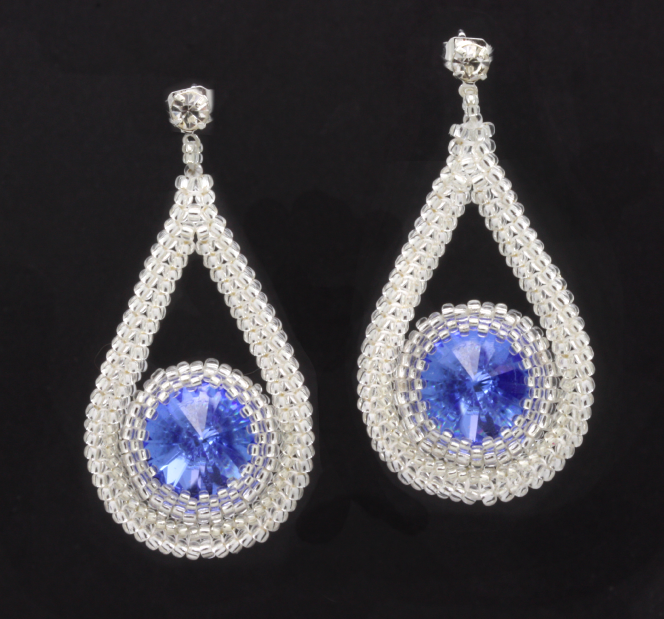Welcome to bead weaving!
What is bead weaving?
Bead Weaving to suit all levels of experience
There are lovely simple techniques, suited for beginners, all the way up to super complex designs that require multiple bead weaving techniques. see below an example of a bead weaving project suitable for a beginner, and an advanced bead weaving project.




A Brief History of Bead Weaving
Bead weaving with seed beads is an ancient craft with roots stretching back thousands of years. This intricate art form has evolved through various cultures and eras, each contributing unique techniques and styles. Bead weaving dates back to ancient civilisations where tiny beads, often made of glass, stone, or faience, were woven into fabrics or used to create intricate jewellery. These beads were often woven using simple looms or stitched together with threads.
After European contact in the 17th century, glass seed beads were introduced to Native American tribes. They quickly adopted bead weaving into their cultural practices, creating detailed patterns in clothing, accessories, and ceremonial items using techniques like peyote stitch and loom weaving.
In the Victorian era, bead weaving saw a resurgence, especially in England, where women created intricate beaded purses, jewellery, and decorative items. The period was marked by the use of tiny seed beads in a variety of new, creative applications.
In the 20th Century the craft of bead weaving spread globally, with countries like Japan and the Czech Republic producing high-quality seed beads. New techniques were developed, and bead weaving became a popular hobby.
Today, bead weaving is both a traditional craft and a contemporary art form. Artists and crafters around the world use seed beads to create complex, colourful designs in jewellery, textiles, and artwork, continuing to innovate and expand the possibilities of this ancient technique.
Bead weaving with seed beads remains a vibrant and evolving tradition, blending ancient practices with modern creativity.
Which Beads Can I use for bead weaving?
Beading Needles
Beading threads
What else you may need..
What is a comfortable length of beading thread?
What happens if I run out of my length of thread mid way through my project?
TIP - Using a seed bead as an end stopper
Is there a correct way to hold my beadwork?
What Does Tension mean? Why is it important?
How Do I finish off my beadweaving?
How do I Iook after my beadweaving once it's finished?
What do we enjoy about bead weaving?
Here are the reasons why we love to bead weave......
It's so satisfying! It's a wonderful feeling when you have finished a piece you have made with your hands, plus you get the wear it afterwards!
It's really fun learning a new skill, a bead weaving technique can be tricky at first, but you practise, feel confident, make a finished piece - which gives you a great sense of achievement! Then there are so many other techniques you can learn!
We LOVE colours! It's so fun planning colour ways with the many colours of seed beads, and experimenting by creating the same piece in different colours. We find the process of choosing colours really fun, creative and expressive.
We find bead weaving very therapeutic, it feels so good to put your smart phone to one side and to be doing something practical with your hands, to be in deep flow and to concentrate on something practical. We find beadwork very good a making us practise patience! In our super fast paced modern lives, it's easy to want tasks to be completed quickly, however bead weaving makes us slow down and to be immersed in the task in hand. If you don’t concentrate, it will go wrong!
We love to wear handmade jewellery, we think it's way more fun to express yourself by wearing something unique and handmade. A huge enjoyment for us is to make jewellery to give as gifts. There is so much care, love and time that goes into handmade jewellery, which makes it the perfect personal gift.
Discover our free step by steps and start beadweaving
Happy Beading!










